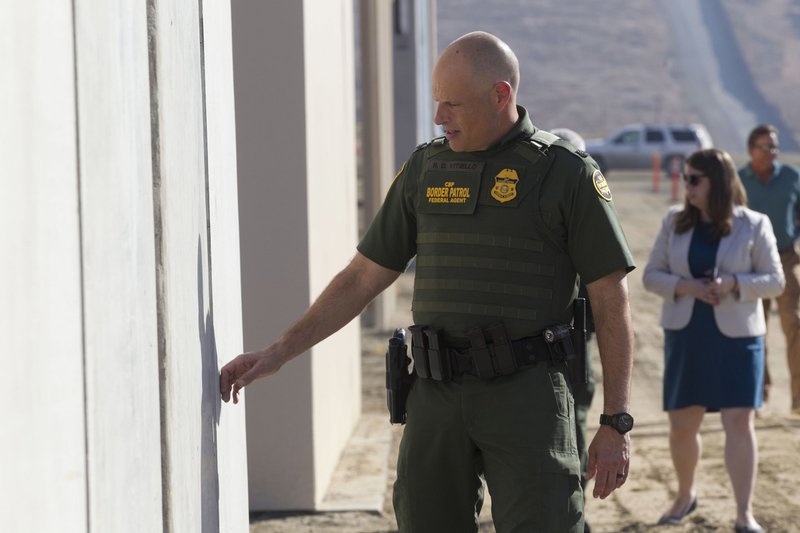SAN DIEGO -- The U.S. government announced Thursday that prototypes for President Donald Trump's proposed border wall with Mexico have been completed and will be subjected to punishment to test their mettle -- by workers wielding sledgehammers, torches, pickaxes and battery-operated tools.
The testing lasting up to two months could lead to officials concluding that elements of several designs should be merged to create effective walls, said Ronald Vitiello, U.S. Customs and Border Protection's acting deputy commissioner. That raises the possibility of no winner or winners.
Results of the testing will dictate future wall construction, which has not yet been funded by Congress.
The testing won't start for at least a month because some concrete in the wall prototypes still needs to dry.
[PRESIDENT TRUMP: Timeline, appointments, executive orders + guide to actions in first 200 days]
Vitiello told reporters that workers during the 30-60 day testing period will try to answer basic questions: "Can it be climbed? Can it be dug under? Can it withstand cutting tools?"
The U.S. currently has 654 miles of single-layer fence along the 1,954-mile border, plus 51 miles of double- and triple-layer fence. This summer, the government picked six companies to build models to guide future construction.
Each model is spaced about 30 feet apart a few steps from a fence made from old steel airstrip landing mats separating San Diego from Tijuana, Mexico.
Contractors were awarded between $300,000 and $500,000 for each model and had a month to build them.
W.G. Yates & Sons Construction Co. of Philadelphia, Miss., and Caddell Construction Co. of Montgomery, Ala., built one concrete model and one using other materials.
Texas Sterling Construction Co. -- a unit of Sterling Construction Co. -- and Fisher Sand & Gravel Co. of Tempe, Ariz., used concrete designs.
ELTA North America Inc., part of state-run Israel Aerospace Industries, and KWR Construction Inc. of Sierra Vista, Ariz., built models from other materials.
Each reaches the maximum allowed height of 30 feet or close -- significantly higher than existing walls. Vitiello said the height was what struck him most on his tour Thursday.
A Section on 10/27/2017

